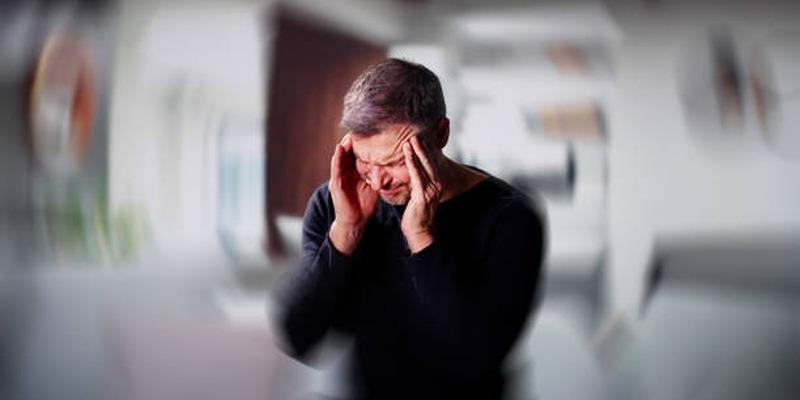Vertigo, a sensation of spinning or dizziness, often stems from issues within the inner ear or nervous system. It can be triggered by sudden movements, changes in posture, or underlying health conditions. Understanding the causes and how posture influences vertigo is crucial for managing symptoms and improving overall balance and well-being.
What Is Vertigo?

Vertigo does not represent a disease, but it is a symptom of a problem. It is not the same as general dizziness, but it has a specific spinning sensation. Individuals affected by vertigo could experience the sensation that they are tipping, falling, or swinging. The duration of these episodes may vary between a few seconds and a few hours, depending upon the cause.
Vertigo is categorized into two main types:
- Peripheral Vertigo: Linked to issues in the inner ear or vestibular nerve.
- Central Vertigo: Related to problems in the brain, particularly the brainstem or cerebellum.
Understanding the kind of vertigo an individual is suffering allows one to know the line of treatment to take.
Common Causes of Vertigo:
Several conditions can lead to vertigo. Understanding these causes allows for more precise diagnosis and management:
1. Benign Paroxysmal Positional Vertigo (BPPV)
One of the most common vertigo causes is BPPV. It happens when small calcium particles (known as canaliths) move out of their usual position and get into the semicircular canals of the inner ear. This disrupts the brain functions of interpreting head position and movement.
The symptoms are usually witnessed upon movement of the head position, as in rolling over in bed or looking up. BPPV is normally not long lasting and may recur.
2. Vestibular Neuritis
It is a condition in which the vestibular nerve, carrying the balance signals between the inner ear and the brain, is inflamed. It manifests itself often as abrupt, intense vertigo with imbalance and nausea. In contrast to BPPV, it does not usually involve hearing.
3. Meniere’s Disease
Meniere’s disease is a chronic disorder of the inner ear involving fluid buildup. It can cause recurring episodes of vertigo, ringing in the ears, and hearing changes. While less common than BPPV or vestibular neuritis, its symptoms are often more intense and long-lasting.
4. Head or Neck Injuries
Trauma to the head or neck can disrupt the inner ear or brain regions responsible for balance. This may lead to long-term episodes of vertigo, especially if the injury affects the cervical spine.
5. Neurological Conditions
Conditions affecting the brainstem or cerebellum can trigger central vertigo. While these are less frequent, they require more in-depth neurological evaluations. Examples include issues involving nerve compression or blood flow disruptions.
The Role of Posture in Vertigo:
Posture refers to the way we hold our bodies when standing, sitting, or lying down. Poor posture can place unnecessary strain on muscles and nerves, potentially impacting the vestibular system responsible for balance.
1. Cervicogenic Dizziness
This form of dizziness arises from dysfunction in the neck region. When the cervical spine's joints or muscles are stressed—often due to slouching, hunching over devices, or prolonged sitting—nerve signals from the neck to the brain can be disrupted. This can mimic vertigo or intensify existing symptoms.
Common posture-related triggers include:
- Forward head posture
- Rounded shoulders
- Sitting without lumbar support
- Looking down at devices for extended periods
Correcting posture may relieve the pressure on neck structures, improving balance and reducing vertigo episodes.
2. Prolonged Static Positions
Remaining in one position for extended periods, especially with poor alignment, can limit blood flow to the brain and inner ear. This may contribute to sensations of dizziness and unsteadiness. Ensuring regular movement and postural changes throughout the day helps maintain healthy circulation and vestibular function.
How Poor Posture Affects the Vestibular System?
The vestibular system includes parts of the inner ear and brain that help control balance and eye movements. It constantly receives input about body position from the eyes, inner ear, and muscles.
When posture is compromised:
- Muscle tension increases in the neck and shoulders.
- Head position shifts, altering inner ear balance signals.
- Cervical spine misalignment may impact nerve pathways.
This mismatch between sensory inputs can confuse the brain, leading to vertigo or dizziness. Over time, this miscommunication may cause symptoms to become more frequent or intense.
Diagnosis and Medical Evaluation:
A thorough evaluation is essential for determining the cause of vertigo. Medical professionals use various tools and tests to identify the source:
- Physical Examination: Observing balance, eye movement, and gait.
- Dix-Hallpike Test: A specific maneuver used to diagnose BPPV.
- Imaging Tests: MRI or CT scans may be used if central vertigo is suspected.
- Hearing Tests: To assess whether inner ear function is involved.
Understanding whether posture plays a role is also vital. In some cases, a referral to a physical therapist or specialist in vestibular rehabilitation may be necessary.
Postural Corrections to Help Manage Vertigo:

Improving posture can be a helpful strategy for reducing vertigo episodes, particularly if the cause is linked to neck or spinal alignment.
Here are some practical steps:
1. Ergonomic Adjustments
Ensure that workstations support healthy posture. Keep screens at eye level, use chairs with lumbar support, and maintain a neutral wrist and shoulder position.
2. Regular Stretching
Gentle stretches for the neck, shoulders, and back can relieve muscle tension and improve circulation. These can be done periodically throughout the day.
3. Core Strengthening
A strong core supports the spine and reduces strain on the neck. Exercises such as planks or gentle yoga can enhance postural stability.
4. Mindful Head Positioning
Keep the head aligned over the shoulders and avoid craning forward when using phones or reading. This reduces unnecessary stress on the neck.
5. Vestibular Rehabilitation Therapy
For persistent vertigo, a trained therapist can design exercises that retrain the brain to interpret balance signals correctly. These often include movements to improve posture, coordination, and gaze stability.
When to Seek Medical Help?
Although mild vertigo may resolve on its own or with posture correction, persistent or severe symptoms should not be ignored. Seek professional evaluation if you experience:
- Repeated episodes of spinning sensations
- Balance issues affecting daily tasks
- Vertigo accompanied by headaches or vision changes
- Nausea or vomiting that does not improve
Early diagnosis and appropriate management can prevent complications and improve overall well-being.
Conclusion:
Vertigo can significantly interfere with daily life, but understanding its causes, particularly the often-overlooked role of posture, opens the door to effective management. Whether it's due to inner ear disturbances or neck strain from poor posture, the key lies in identifying the root cause. By combining medical evaluation with postural awareness and lifestyle adjustments, individuals can reduce symptoms and regain control over their balance and comfort.












